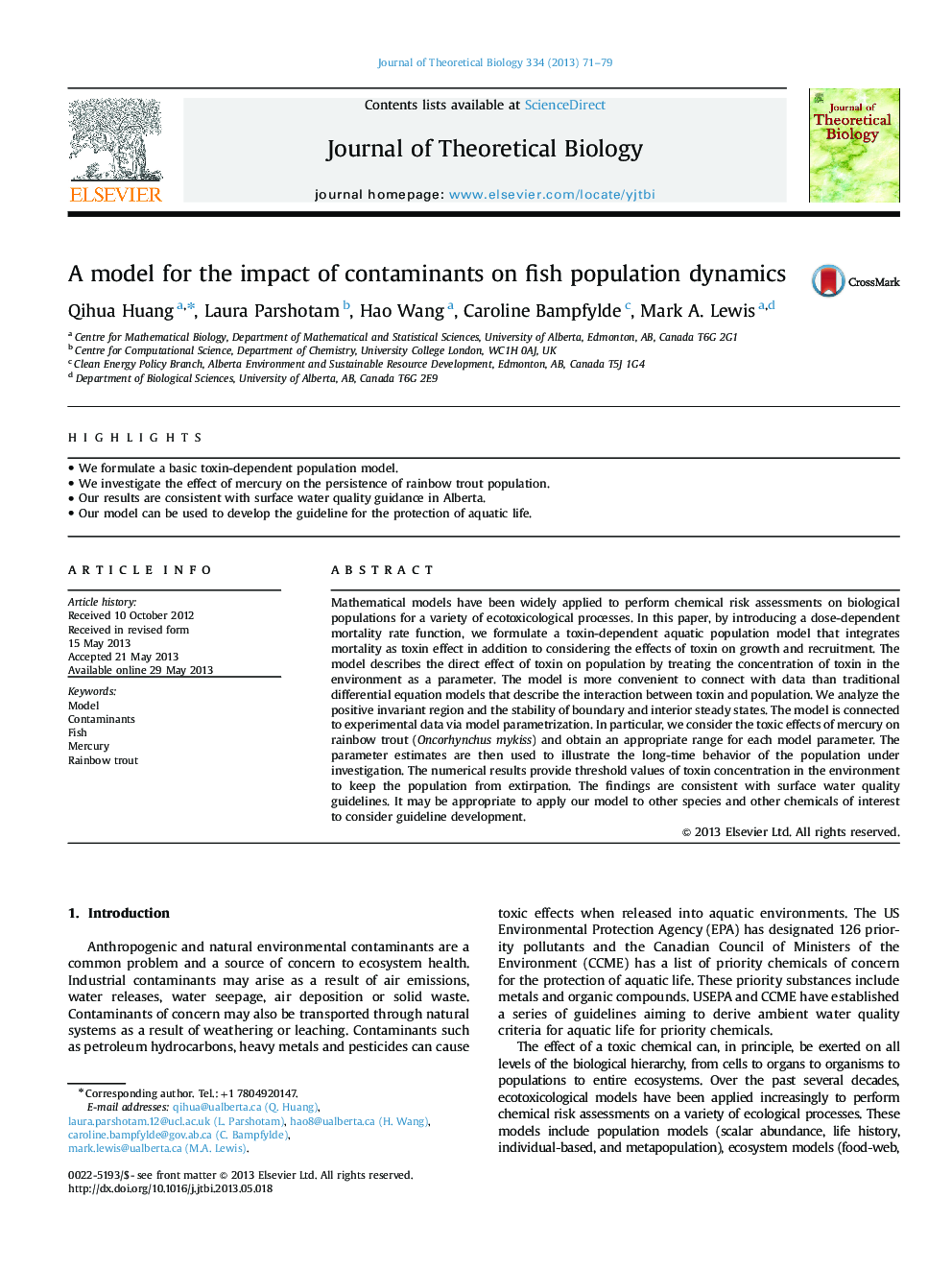| Article ID | Journal | Published Year | Pages | File Type |
|---|---|---|---|---|
| 6370857 | Journal of Theoretical Biology | 2013 | 9 Pages |
Abstract
Mathematical models have been widely applied to perform chemical risk assessments on biological populations for a variety of ecotoxicological processes. In this paper, by introducing a dose-dependent mortality rate function, we formulate a toxin-dependent aquatic population model that integrates mortality as toxin effect in addition to considering the effects of toxin on growth and recruitment. The model describes the direct effect of toxin on population by treating the concentration of toxin in the environment as a parameter. The model is more convenient to connect with data than traditional differential equation models that describe the interaction between toxin and population. We analyze the positive invariant region and the stability of boundary and interior steady states. The model is connected to experimental data via model parametrization. In particular, we consider the toxic effects of mercury on rainbow trout (Oncorhynchus mykiss) and obtain an appropriate range for each model parameter. The parameter estimates are then used to illustrate the long-time behavior of the population under investigation. The numerical results provide threshold values of toxin concentration in the environment to keep the population from extirpation. The findings are consistent with surface water quality guidelines. It may be appropriate to apply our model to other species and other chemicals of interest to consider guideline development.
Related Topics
Life Sciences
Agricultural and Biological Sciences
Agricultural and Biological Sciences (General)
Authors
Qihua Huang, Laura Parshotam, Hao Wang, Caroline Bampfylde, Mark A. Lewis,
